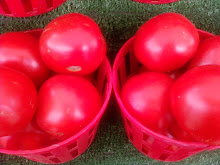



Dugong
Scientific name: Dugong dugon
Family: Dugongidae
Description: The dugong is a large herbivorous marine mammal that has a long rotund body and a tail or fluke for propulsion. Adult dugong can reach lengths of more than three metres and weigh up to 420kg.
Dugongs have relatively poor eyesight, so rely on the sensitive bristles covering the upper lip of their large snouts to find and grasp seagrass. Cows and calves communicate by producing 'chirps'.
Habitat and distribution: Major concentrations of dugongs along the Queensland coast occur in wide, shallow, protected bays and mangrove channels, and in the inside edge of large inshore islands. These areas coincide with significant seagrass beds. They also use deep-water habitats. Large numbers have been sighted in water more than 10m deep in several areas, including the Torres Strait, the northern Great Barrier Reef region, and Hervey Bay in southeast Queensland.
Also known as a sea cow, Dugong's feed in the seagrass beds of the Indo-Pacific. They are the only herbivorous, truly marine mammal. (The related manatee spends some of its life in fresh water.)
Being a slow swimmer, you'll find dugongs in sheltered lagoons and bays in warm water such as are found in the Red Sea (eg Marsa Alam), East Africa, the Philippines, and Australia.
Adult dugongs can grow to over 3.5 m (11 ft), and may weigh over 900 kg (2000 lb). Male dugongs begin to grow tusks between the ages of 12 and 15 years. If food is plentiful, the habitat protected, and predation low, dugongs may live more than 70 years.
More pictures of Dugongs are in the Red Sea rooms of our photo gallery.
A large proportion of the world’s dugong population is found in northern Australian waters from Moreton Bay in the east to Shark Bay in the west, they have also been found down into New South Wales.
Diet: Dugong feed almost exclusively on seagrass, a flowering plant found in shallow water areas. An adult will eat about 30 kilograms of seagrass each day. As dugong feed, whole plants are uprooted leaving telltale tracks behind. They will also feed on macro-invertebrates.
Known as ‘cultivation grazers’, dugong feed in a way that promotes growth of Halophila ovalis – their preferred seagrass species. Pulling out the seagrass aerates the sea floor and increases the amount of organic matter in the area, therefore encouraging regrowth of the seagrass.
Behaviour and life history: Dugong may live for 70 years or more and are slow breeders. The female dugong does not begin breeding until she is 10-17 years old, and only calves once every three to five years, providing seagrass and other conditions are suitable. This slow breeding rate means that dugongs are particularly susceptible to factors that threaten their survival.








